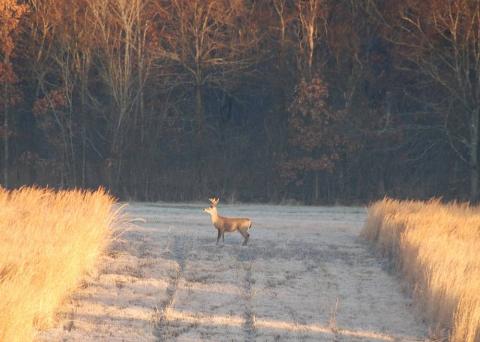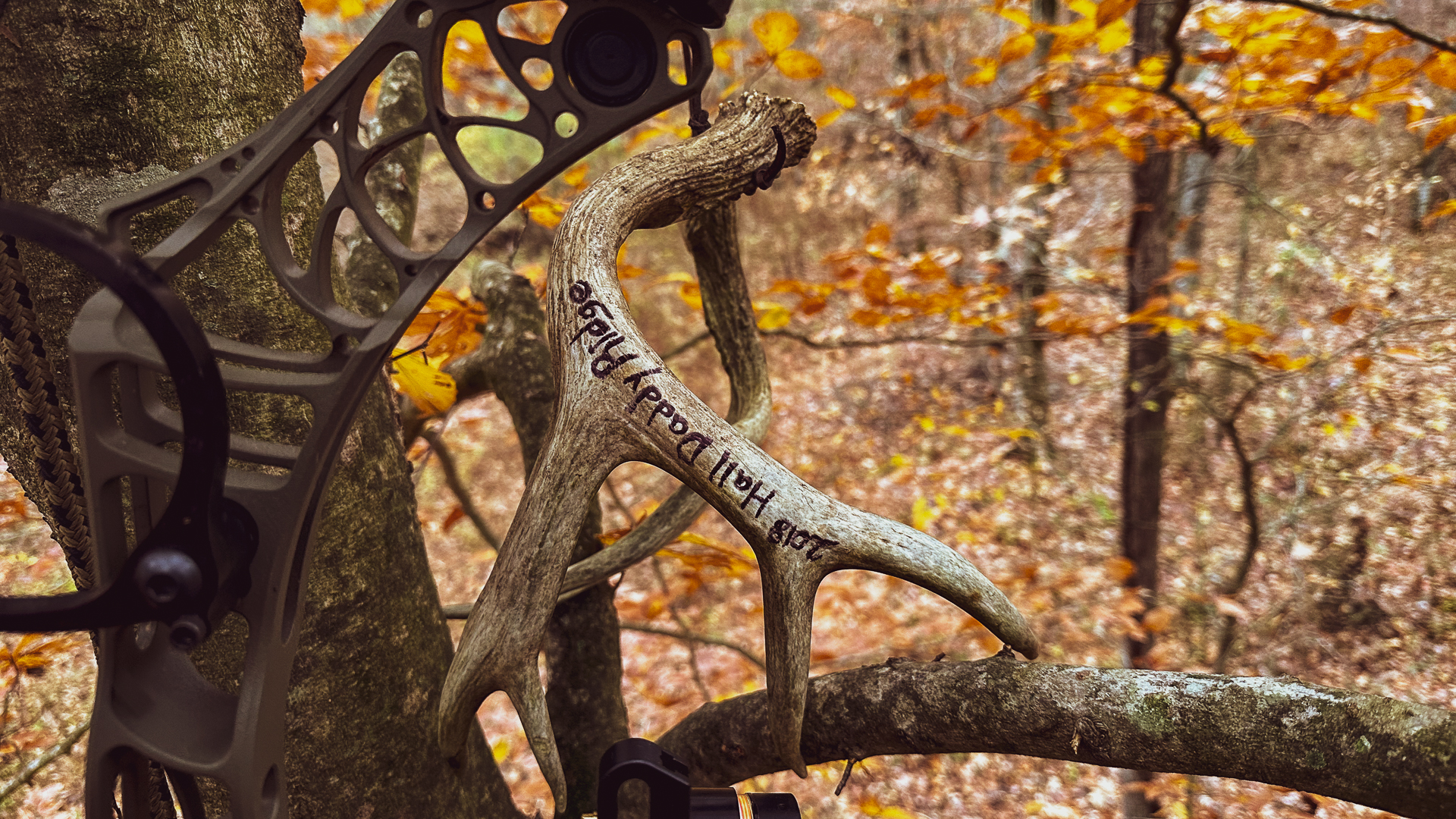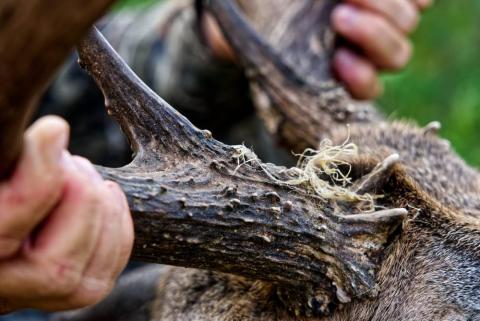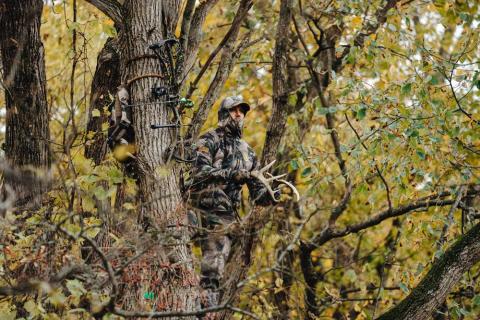By Heath Wood
Late-season hunting during December and January's cold snaps presents unique opportunities and challenges. As temperatures plummet and snow blankets the terrain, hunters who embrace stand hunting can experience some of the most rewarding days of the season. However, success requires mastering the art of patience, staying warm, controlling wind scent, and adapting to frigid winter conditions and, in some cases, snow-covered landscapes.
I often take September and October bowhunting for granted, especially when I find myself bundling up in heavy cold-weather gear to endure the frigid conditions of late-season hunts. Those early fall days, with lows in the upper 40s and highs in the low 60s, feel like a distant dream as I sit through bitterly cold hours in my stand. During those freezing moments, I can’t help but ask myself, is it worth it? Is late-season hunting a prime opportunity to tag a mature buck? Despite the challenges, the season's final weeks remain among my favorite times to be perched on a treestand.
The Benefits of Cold Snap Stand Hunting

Photography by Tes Jolly
Cold snaps can trigger a predictable pattern in deer behavior. With food sources dwindling and the need for calories increasing, deer often move to feed during daylight hours, making them more visible to stand hunters. Mature bucks, worn down from the rut, become more focused on conserving energy and feeding, allowing hunters to catch a mature buck on their feet.
Parts of the country that receive a lot of snowfall late in the season can attest to the advantage that snow-covered terrain also adds. Tracks and trails are easier to spot, providing valuable clues about deer movement patterns. Additionally, the white backdrop enhances visibility, making detection of movement from the stand easier.
While sitting in a tall ladder stand on a snow-covered morning in southern Missouri, I can recall laying eyes on a mature buck, making his way into a deep ravine to check does. If it weren't for the white-covered ground, I would not have seen the buck in time to make the shot. Yet, because of the snow, I got my rifle ready just in time to make the shot before losing sight of him, allowing me to bring a nice buck back home that cold, snowy morning.
Challenges of Late-Season Stand Hunting
The same elements that offer benefits also introduce challenges. The frigid temperatures and biting winds can test even the most seasoned hunter’s endurance. Staying motionless for extended periods becomes increasingly difficult as the cold seeps in, making proper preparation essential.
Deer are also warier later in the season after months of hunting pressure. They often avoid areas with excessive human scent, poorly placed stands, or areas hunted much earlier in the season. This makes wind control and stand location critical to success. Sometimes, hunters must move their stands to adjust to the late-season behavior or have stands reserved to hunt only when the season is winding down.
Staying Warm: Layering and Gear Essentials
Staying warm is crucial for late season stand hunting. Without proper clothing, the cold can quickly erode patience and focus. Layering for warmth is necessary when dressing for a tree stand during a cold day hunt. Start with a moisture-wicking base layer to keep sweat off your skin, followed by insulating layers like fleece or down. Top it off with a windproof and waterproof outer layer to shield against the elements. I know my hunting ancestors would probably shake their heads at me, yet in recent years, I have taken advantage of many modern heating technologies to help stay warm longer when hunting. Reusable hand warmers such as the Muddy Outdoors 3 In 1 Rechargeable Hand Warmer have been a favorite of mine this year. When I reach into my pocket or hand muffs and feel the instant heat of the hand warmer, I know I will be comfortable longer, which means I can hunt longer. Hand and foot warmers, battery-powered heated socks, and even heated vests such as the ScentLok BE:1 Heated Vest that I wear on many of my cold day hunts can make a significant difference during long sits in freezing temperatures.
Mastering Wind Control
Wind can make or break a hunt in late season. Deer rely heavily on their sense of smell, and late-season survivors are especially cautious. Always position your stand downwind or crosswind of deer travel routes and feeding areas to minimize scent detection. Before heading to your stand and again after you make it into your stand, apply scent-eliminating sprays to your gear and clothing, and consider using ozone generators in your hunting area or storage bag. It is also vital to avoid leaving scent trails near bedding or feeding areas by taking a roundabout route to your stand; even if it takes you longer, the benefits will outweigh this minor inconvenience.
Adapting to Snow-Covered Terrain

Snow changes the game for both deer and hunters. It alters travel patterns, exposes new bedding areas, and creates opportunities for tracking. Whenever the first snow falls, if not hunting, I am out scouting the fresh snow. Looking for fresh tracks after a snowfall can help locate active trails and feeding areas that can be used to adjust your stand placement better, especially when bowhunting late season.
Another advantage of snow-covered grounds is watching for bedding areas. Deer often bed in areas that offer both thermal cover and escape routes, such as south-facing slopes or thickets. So, find bedding areas, mark them on your GPS hunting app, and use them for future reference.
You can also use snow to stay silent when hunting. Snow muffles sound, allowing you to move more quietly when adjusting your position, entering the stand, or easing through the woods while mobile hunting.
The Mental Game: Patience Pays Off
The most significant hurdle of cold snap stand hunting is maintaining focus and patience in harsh conditions. Long sits in the cold can test even the most determined hunter, but the reward of seeing a mature buck materialize in the snow-covered woods makes it worthwhile. The mind can play some pretty good tricks when trying to convince yourself you should sit in the cold instead of being somewhere warm. Breaking the sit into segments can help you stay longer. Set goals for staying on stand during key movement times, such as early morning and late afternoon.
Another mental part of the game is staying positive. I often remind myself that the late season offers a prime chance at a trophy buck as deer movement becomes more predictable, and the buck I have been chasing could show up at any time.
Stand hunting during cold snaps is not for the faint of heart, but the rewards can be immense for those who prepare and persevere. By dressing for the cold, mastering wind control, and adapting to the unique conditions of snow-covered terrain, you can turn the challenges of late-season hunting into opportunities. Embrace the art of patience, and you may find yourself staring down the buck of a lifetime.
Read More: Strategies for Hunting the Second Rut






























